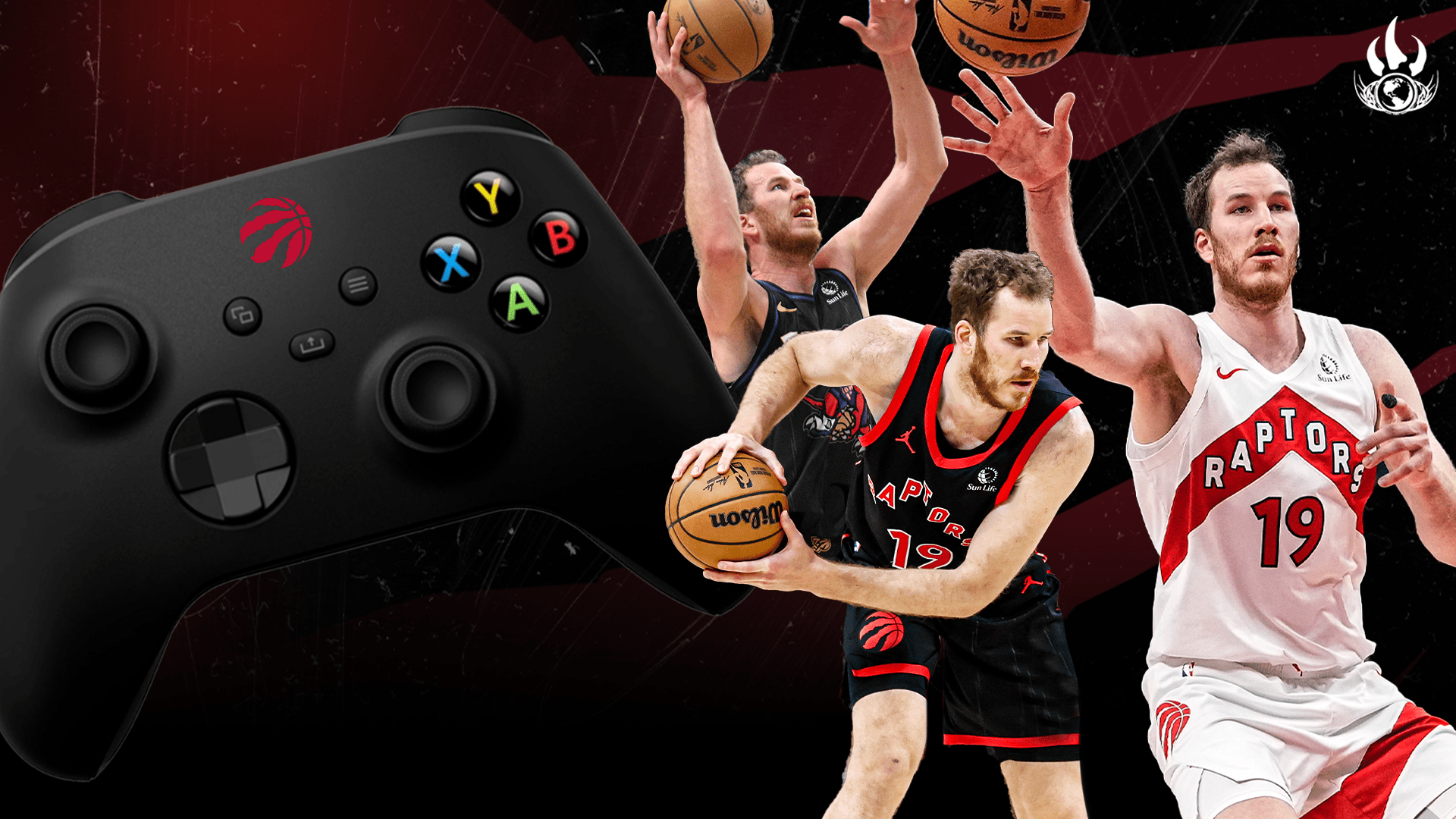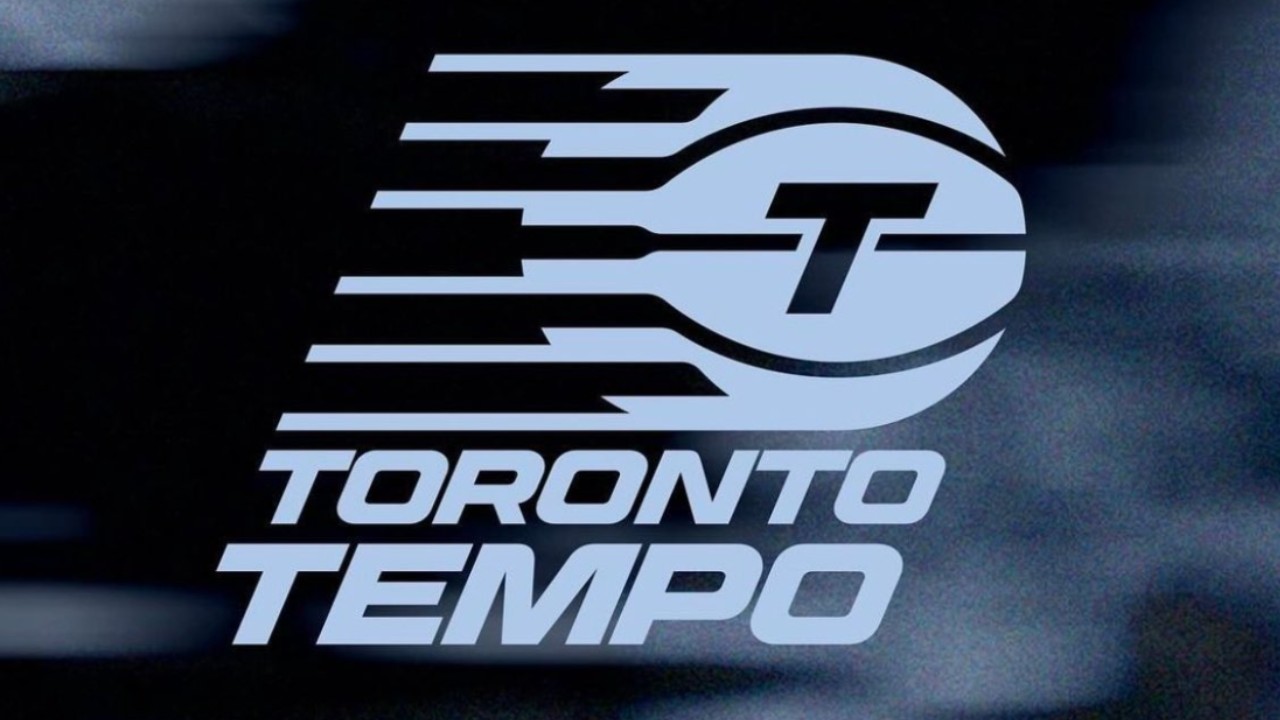The Toronto Raptors do a funny thing on offence when they need points. They frequently turn to a total non-entity when it comes to shooting, and they give him the ball 26 feet from the rim. But for Jakob Poeltl and the Raptors, that is when the fun begins.
The Raptors run oodles of delay action. Less since Scottie Barnes has returned from injury. (More on that later.) But delay — defined more or less as a team’s center handling the ball above the break and deciding where to flow while offence runs around him — still remains a key cog in Toronto’s arsenal. Poeltl is the determinant of success there. Not because of any hard skills he possesses, no. Instead, he excels because of his ability to make lists: to prioritize one action over another, to toggle between sets, and to ultimately choose the golden path to the bucket. He’s excellent at reading multiple cuts, at reading defenders’ momentum. It doesn’t always look fancy, and it doesn’t always result in numbers next to his name in the box score. But it works.
Who’s the real star? The pilot, or the air traffic controller?
I mean, the pilot, obviously. No one is arguing that Poeltl, Toronto’s offensive air traffic controller for such large swathes so far this season, is Toronto’s star. But still. Just as there would be countless more collisions at airports without the heroes in the tower giving everyone a number and telling them to wait their turn, so too would there be more turnovers and less quality to Toronto’s offence without Poeltl calling the shots.
“Obviously, pick and roll is a big part of [the NBA],” said Darko Rajakovic. “You’re seeing more and more DHOs…you’re seeing much more off-ball screens, and delay is enhancing all of that. A lot of pin downs, a lot of flare screens, opportunities for guys to cut. It’s not easy to guard all that movement.
“It’s putting a lot of pressure on defense to communicate, to be physical, and then you have a five-man who is capable to connect, who is capable to make those passes and reads. I think it’s a very hard offence to guard.”
In 2016, James Harden earned his status as philosopher king when he said, “there’s only one basketball.” He was questioning whether Kevin Durant would really help the Golden State Warriors all that much. Of course, the line had previously been employed to criticize former star pairings, including Kobe Bryant and Shaq O’Neal, LeBron James, Dwyane Wade, and Chris Bosh, and plenty more.
Why? Because it’s true — there is only one basketball. Only one player can hold it at one time, can dribble it, shoot it.
But even if only one player can dribble the ball at one time, can shoot it, others can help make those dribbles easier, those shots more open. Shooting, for example, isn’t additive, it’s multiplicative. Durant and Steph Curry proved that, and it took the Toronto Raptors (and Draymond Green), to end their reign of terror.
What Poeltl offers Toronto is the determinative ability to make sure that everyone’s individual skills are as multiplicative as possible. Maybe his own talents, those of the sweaty hands gripping the controller, fall under the auspices of “there’s only one ball.” (And, again, more on that later.) But that doesn’t really matter for Toronto, because Poeltl is just about as good as it gets there anyway. At times, players have even opted not to choose pick and rolls, preferring to let Poeltl make the choice rather than themselves, and tossing the ball to Poeltl to let him decide where to flow.
And broadly, he has been the guy touching the ball for Toronto. The wisest among us knew he was set for a career year, and you know what? He’s having it. He is averaging 62.6 touches per game, third on the Raptors (ahead of all point guards), the most among 7-footers in the league, and sixth among all centers. Those above him are mega stars like Nikola Jokic and Anthony Davis, offensive leaders like Domantas Sabonis and Bam Adebayo, and Nikola Vucevic. Poelt’s 62.6 touches per game is also a career high; his previous was 58.0 touches per game in 2021-22.
“Jak[ob Poeltl] is one of the best players in the league doing that [controlling the offence in delay actions], just one notch under Nikola Jokic,” said Darko Rajakovic.
Delay actions involve the big man holding the ball at the top of the key while the offence flows around him. That means it can toggle into or out of all sorts of popular offensive steups — split cuts (think Golden State Warriors), horns, Pistol/21, staggered ball (or off-ball!) screens, get actions, pindowns into zoom/Chicago, anything.
The point is to throw the playbook in Poeltl’s hands, saying ‘you choose.’ He’s the offensive coordinator, but with the ball and on the court rather than wearing a headset on the sidelines.
It’s not just processing ability and making the right choice. He also enacts that choice. Good leaders make the right choices. The best leaders ensure those choices are the right ones, and see them through to the bitter end. When Poeltl decides that the play is going to toggle towards the rim, to stop its balletic process of motion and cutting and relocation, he makes damn sure it gets to the rim. By mashing people. Absolutely pulverising them.
He can screen for his ballhandlers, sure. Hold off speedy guards and lengthy wings, plant his body firmly in their path, hold his weight until just the right moment before releasing, all to create dribbling lanes for his teammates. He’s second in the league in screen assists per game, sandwiched in between artists Sabonis and Jokic. That’s an important skill. But he can screen his defender, too. Hold off hulking brutes, enormous 7-foot bodies like his own. In fact, he can screen both at the same time, just for fun.
Sometimes he can screen both, not at the same time. Against the Detroit Pistons on Nov. 25, the Raptors found themselves down a point with under two minutes remaining. Barnes held the ball and saw a lane open. A wide lane. A Poeltl-sized lane, as Toronto’s center had just mashed Barnes’ defender back to halfcourt. Barnes faced up against Duren, who had been Poeltl’s defender. The three waltzed into the lane, and then Poeltl decided to mash Duren, sealing him into the lane to create even more space for Barnes. RJ Barrett stood in the corner, and with his defender sinking into the paint to defuse the emergency, Barnes found Barrett for the easy triple. Barnes and Barrett put the numbers in the box score, but Poeltl did the work. The heavy lifting, as it were.
He’s not just there to hit guys — he actually sores the ball, too. He’s scoring a career high 16.0 points per game, and even though his efficiency is down slightly from last year, he still has an effective field goal percentage of 59.4 and climbing. He gets his points, very often, through his authorship of the entire play. He toggles from one action to the next, selecting the best set like a fine vintage at the restaurant, before finally handing the ball off, smashing some poor defender’s skull, and then rolling into space — whereupon he’ll receive the ball in his pocket and just toss it in. That’s the easiest part of the play, the scoring.
Poeltl is in the top 10 in the league among possessions used per game as the roll man. When he finishes those possessions, Toronto is averaging 1.19 points per. His push shot is more or less unstoppable — he’s shooting 60 percent on such looks, and he turns to it in virtually all areas of the floor from the midrange in. The deadliness of his push shot actually is built in as a decoy to the footwork of his layups.
And that’s all just the end of the road for Toronto’s offence. Finishing possessions with the brute force of screens and the graceful artistry of floaters is how he closes things out. But the processing, the decision-making, that actually gets Toronto to that point? That’s where his true value lies.
As a result, a line I wrote several years ago about Jimmy Butler comes to mind in regards to Poeltl: “He’s both the tip of the spear and the hand that thrusts it.”
It’s incredibly rare for players to exist in the state in which Poeltl currently finds himself. He is one of the league leaders in touches per game, and he dictates his team’s offence, yet he takes few shots and creates very little with the ball actually in his hands. For reference, among 64 players to average at least 60 touches a game, Poeltl has the 44th-highest shots per touch, at 0.21. He is just below Barnes, actually. And when it comes to dribbling, Poeltl is even more distinguished; he is in the bottom 10 in the league for dribbles per touch.
Despite the quality Poeltl has shown in delay actions, the Raptors are turning away from it as the season has aged. That has largely coincided with Barnes’ return to health, as the Raptors want the ball in his hands. They want him orchestrating the offence, not Poeltl. There is, after all, only one ball. And when Poeltl is holding the ball above the break, that minimizes Barnes’ abilities and turns him into more of a cutter, shooter, and screener — all skills that are underdeveloped, relative to his other talents. It is perhaps for this reason, the Raptors actually have a higher offensive rating with Poeltl on the floor and Barnes off than they do with Barnes and Poeltl together, or with Barnes alone.
When you throw Poeltl alongside Gradey Dick — an idealized wing for delay offence, who is an excellent shooter, cutter, and driver — the offensive rating rises over 120 without Barnes. There’s an inherent tension there, with Toronto’s best half-court offensive system to this point seeming to deemphasize Barnes. And of course, the Raptors are prioritizing the player they see as a future megastar, letting him run the show for greater spurts. There are plenty of indications that the Barnes-led, more pick-and-roll heavy offence is trending upwards, with Barnes just collecting his career high en route to Toronto scoring 122 in a win.
Of course, it’s a good problem to have multiple offensive systems that can work. And Poeltl’s success will continue, albeit at a lower frequency.
It’s rare for bigs to guide offences in today’s league, and it’s even rarer for them to do so without shooting a whole lot. Even rarer, to do all that without really dribbling when they touch the ball or posting up. And, perhaps the most distinctive component of all, to do all that without being a star, or even close to it. Add all that up, and you’re looking at a player in Poeltl who is fast becoming something of a unique offensive player in a unique role.
Poeltl guides the offence in his own way. Smashing opponents, pirouetting with the ball in his hands to conduct the symphony, smashing someone else, and then tossing the ball in the net to end it off.



